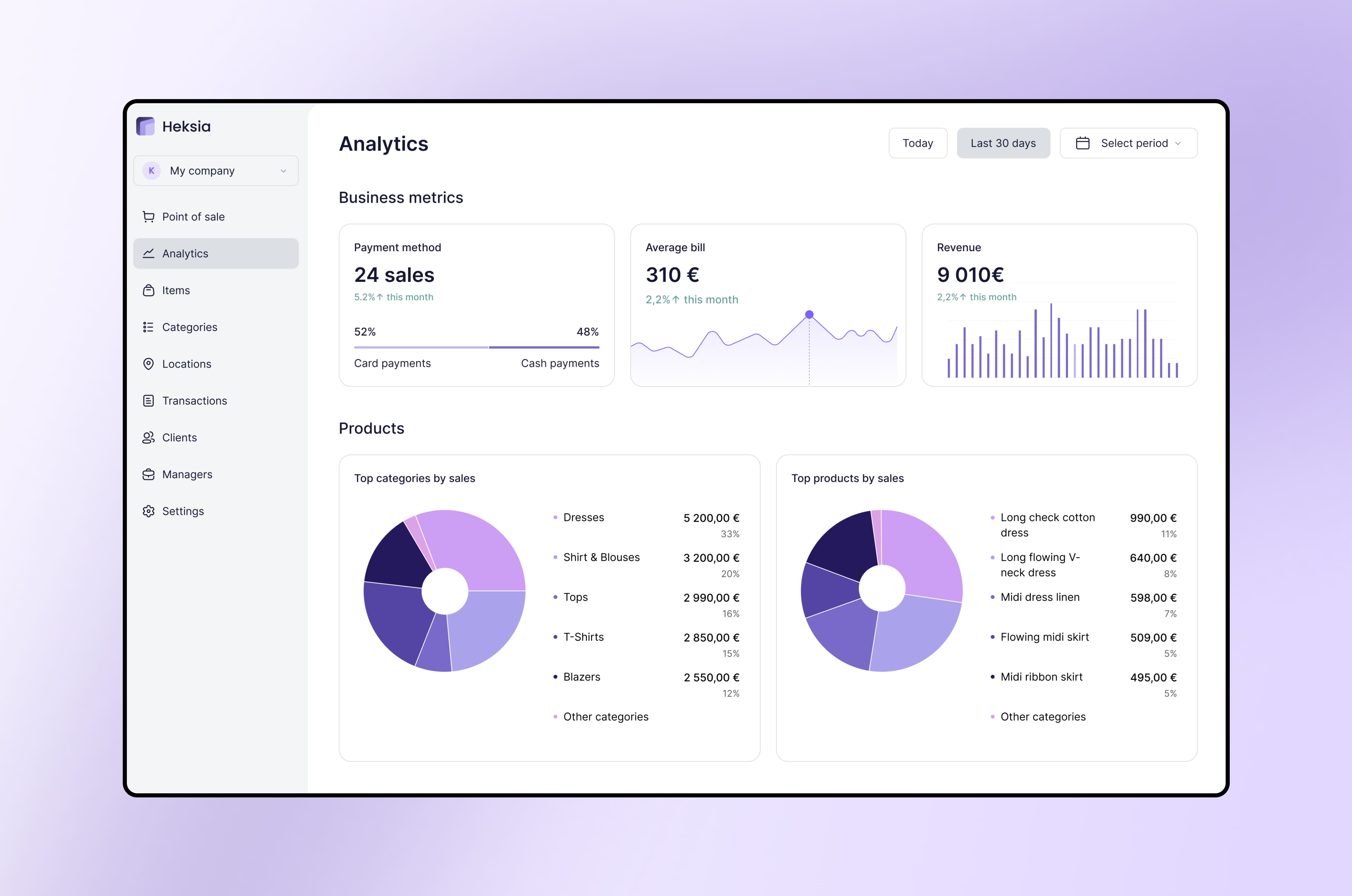From tracking revenue trends to analyzing customer behavior, sales reports give business owners the clarity they need to increase efficiency, optimize product offerings, and boost profits. Here’s how you can use reports from your POS system to sell smarter.
Why sales reports matter in a POS system
Many small business owners rely on gut feelings or outdated spreadsheets. Without real-time reports, it’s easy to overstock or understock key products, run ineffective promotions or lose revenue without knowing why. A modern POS system helps eliminate these blind spots with data you can trust. A good POS system doesn’t just record sales, it turns raw data into meaningful insights. With real-time access to your business’s performance, you can:
- Identify high-performing products and categories
- Understand customer preferences and purchasing behavior
- Track key metrics like average bill, top-selling products, and payment methods
- Spot opportunities to upsell or adjust pricing
- Make decisions based on facts — not guesses
Top products by sales: focus on what sells
Knowing your best-selling items helps you prioritize inventory, run smarter promotions, and avoid stockouts. A POS report that ranks your top products by sales volume or revenue reveals what customers love most — so you can keep them coming back.
🔍 Tip: Use this data to highlight popular products in-store or online, and bundle them with slower-moving items to increase overall basket size.
Top categories by sales: optimize product mix
Category-level insights show how entire segments are performing. Whether it’s drinks in a café or accessories in a clothing store, your POS system’s top categories by sales report helps you decide where to expand, reduce, or refocus your inventory.
🛒 By monitoring category performance over time, you’ll see seasonal trends, shifts in demand, and emerging opportunities.
Average bill: track customer spending
The average transaction size (or average bill) gives you a clear view of how much customers typically spend per visit. This is essential for understanding buying behavior and measuring the impact of upselling strategies.
📈 If average bills are rising, it could mean your promotions or product mix are working well. If they’re dropping, it's time to reassess.
Sales & revenue reports: understand the bigger picture
Your daily, weekly, or monthly sales and revenue reports are the backbone of performance tracking. These POS reports show:
- Total revenue generated
- Number of transactions
- Growth over time
📊 Look for patterns: Are weekends stronger than weekdays? Do certain months consistently underperform? Your POS system should help you answer these questions instantly.
Payment methods: know how customers pay
Payment trends reveal more than just preferred methods, they show you how your business is evolving. Are more customers paying by card or mobile wallet? Are cash payments dropping?
💳 Tip: Offering the right payment options can reduce abandoned purchases and speed up checkout — especially during busy hours.
How sales reports help you sell smarter
- Make informed decisions: from staffing to stock ordering, insights replace assumptions.
- Boost efficiency: automate reporting instead of spending hours on spreadsheets.
- Improve customer experience: offer the right products, at the right time, in the right way.
- Increase revenue: through better timing, pricing, and product focus.
Turn insights into action: smart tips from your sales reports
- Payment method. Track which payment options your customers prefer. If contactless or mobile payments are on the rise, streamline your checkout to support fast, frictionless transactions. Consider adding options like Apple Pay or Buy Now, Pay Later.
- Average bill. Monitor the average transaction size to measure buying behavior. If it’s dropping, try bundling products, offering volume discounts, or training staff to suggest add-ons at checkout.
- Top products by sales. Focus on your bestsellers. Use this data to keep popular items in stock, highlight them in promotions, and bundle them with slower-moving products to boost overall sales.
- Top categories by sales. See which product categories bring in the most revenue. Double down on high performers with more shelf space or marketing support, and phase out those that consistently underdeliver.
- Sales & revenue. Use overall sales data to understand the big picture. Spot high-performing days, measure growth over time, and adjust pricing or staffing based on proven trends.
- Trends over time. Compare weekly or monthly sales to identify seasonal patterns or campaign impact. Use this insight to plan stock levels, prepare for peak periods, and respond early to sales dips.
Choose a POS system that puts insights first

Sales reports aren’t just numbers, they’re your roadmap to smarter, more strategic selling. When your POS system gives you clear, real-time insights into what's working (and what’s not), you gain the power to grow faster, serve better, and stay ahead of the competition. Not all POS systems offer robust reporting tools. Look for one that includes:
- Customizable sales dashboards
- Real-time data syncing
- Mobile access to sales insights
- Clear visualization of trends and performance
Smarter selling starts with smarter tools, invest in a POS system that works as hard as you do.
